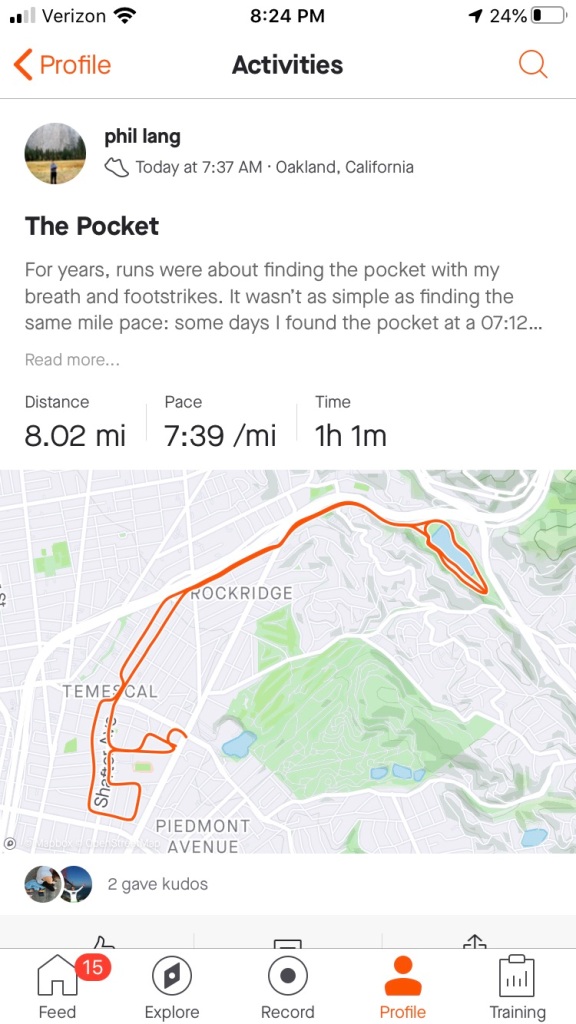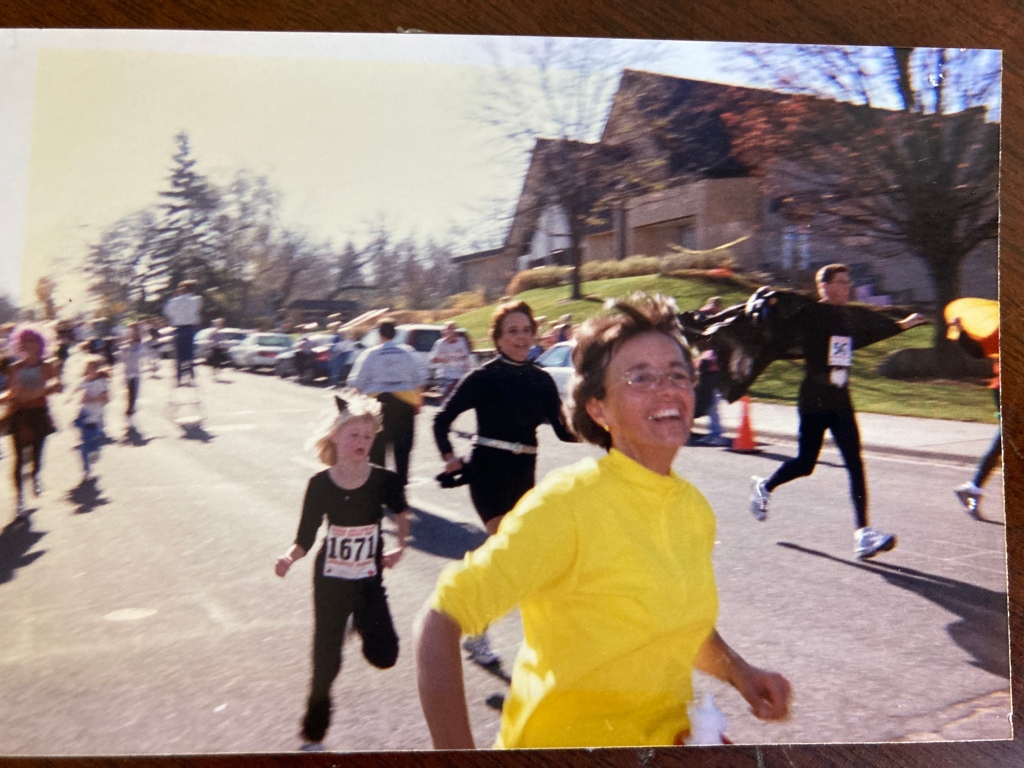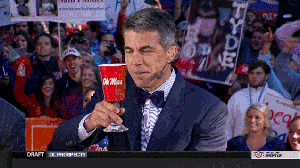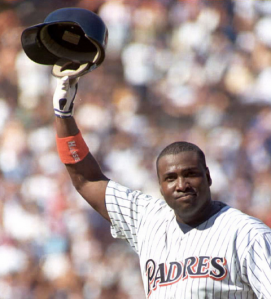My year of running through a pandemic.

The pocket. A hell of a lot of words have been strung together in attempts to explain why people choose to run long distances. Before the pandemic, my explanation had a word count of two: the pocket.
The phrase comes from music. When the members of a band, especially the rhythm section, lock into the groove perfectly, they call it being “in the pocket”. It goes beyond playing at the same tempo; each beat has a shape. 100 beats per minute can feel staccato, with the band attacking right on the first edge of the beat, or a band can slide into the very last nook at the back of the beat. Listen to pretty much any D’Angelo song to hear a band playing on the back of a beat, and think of “Imperial Death March” from Star Wars to hear a rigid attack. The pocket is a feel, created by all players adding their element at the exact right time and emphasis.
For years, runs were about finding the pocket with my breath and footstrikes. It wasn’t as simple as finding the same mile pace: some days I found the pocket at a 07:12 pace, and other days I’d find it on the other side of 07:45. I’d consider it a good run when got into the pocket within a mile or two. I breathed in through the nose for three strides, then out through a loose jaw for three more. A heart rate broken into triplets.
IN-THROUGH-NOSE
OUT-THROUGH-JAW
IN-THROUGH-NOSE
OUT-THROUGH-JAW
IN-THROUGH-NOSE
OUT-THROUGH-JAW
Once I’d find it, few thoughts passed through my mind. The pocket was meditation, and I could run for hours in it. When I finished, my mind was power-washed. My body: elastic, spent. More than a P.R. or adding a marathon to the count, I ran for the pocket.
Like everything, the pocket changed last March.
In the early months, I tried to leave the pandemic at home, but I ran past evidence of it everywhere. Senior hours and lines forming outside Piedmont Grocery. Homemade “wear a mask” and “stay home” signs taped to bay windows of spacious homes I dreamed of affording. I’d run down center of an empty Grand Ave.—a main drag that leads to a San Francisco-bound freeway entrance at 7:30 AM on a weekday. It wasn’t long before the feigns had medical masks hanging from their ears.
Fear came with me on a lot of those runs. I tried to find the pocket with it, to figure out where it could fit in with my breath and footstrikes, but fear made me pull up and stop on two occasions.
In normal times, stopping in the middle of a run was a no-go. The reason for stopping didn’t matter—an untied shoe, forgetting to silence my phone, even a turned ankle—all of them messed up the rhythm. To stop out of urgency, to make a call that couldn’t wait until I finished, was something I’d never experienced.
The first time I stopped on the northwest side of Lake Merritt by rowing docks and the Lake Chalet restaurant. The NBA had just suspended its season. As odd as it may sound to future generations, a sports league shutting down sticks out as the first major decision to put the world on hold. Many shutdowns would come soon after, and on that morning on The Daily podcast a journalist was discussing when the borders would closed to international travel. My brother-in-law was in London at the time, on his way to a backcountry ski trip in the Swiss Alps (of course he was: all of his trips are essentially bringing to life the Instagram photos from outdoor apparel companies).
I called my father-in-law. I told him Jack needed to find a flight home, that day if possible. I’ve recently become marginally comfortable giving my father-in-law feedback on his golf swing, so to call Don and say his son needed to get back stateside was beyond the range of our communication in March, 2020. Yet, to wait the four miles until the run was done felt like a wasting of very important minutes.

Don agreed, and so did Jack once he saw future flights from the U.S. to the U.K. getting cancelled on dates before his scheduled return flight. He bought a one-way ticket on one of the last commercial flights back to the states, having never made it to Switzerland. Good fortune, as it turned out: they checked passports at the gate to see if people had been outside of the U.K. before letting passengers board. Switzerland would’ve presented an issue. It would be months before commercial flights from the U.K. came into the states.
Not long after, I stopped a run near the top of the hill on the way to Lake Temescal. The only thing worse than stopping on a run is stopping in the middle of a climb.
I can’t remember if I called my brother, Tony, or if he called me, but we talked about Mom and Dad. We spoke of the nightmare scenario so many would experience: Mom or Dad getting infected and dying alone in a hospital. We discussed telling them they had to stay home. Although nearly 40, I was (and am) very much getting used to telling my parents what’s in their best interest, although they may not sense my hesitancy.
I could hear Tony turning over the idea in the silence between my heavy breaths. Even that early, my head was always on a swivel when on runs, ready to pull the Buff over my nose and mouth if I saw someone approaching. No decision was made. It wasn’t Tony’s to make, but there’s still an authority coming from the oldest of the six of us. Least I felt it. We hung up.
I was so far from Minnesota at that moment. I’d felt far from home before, but there on the hill the feeling didn’t come from a distance or homesickness. I was far from home in the sense that I didn’t know when I’d be back. Would I be allowed to go home? Would interstates set up barriers at state borders? It sounds crazy, but at that point last spring Spain and Italy weren’t letting people leave their homes except for groceries.
I returned to the climb, but it took an extra moment to get the legs chugging again.
Tony called back a half mile later, just past the parking lot at the top of the hill. Yep, he was going to text the rest of the family. It was too much of a risk with Mom’s history of pneumonia and aspiration issues. Delivering food for Meals on Wheels, going to the grocery store, church, bookclub— all of it had to pause until we had an idea of what the hell was going on.
From that moment until a few weeks ago when my parents were vaccinated, the anxiety of the nightmare kept churning.
The collective unknown that came with the pandemic took months to accept. I’d check the stats every morning as if they were box scores: positive test rates, hospitalization numbers, deaths. I’d search for any indication that a turn in the right direction was coming.
When there wasn’t proof, I’d cling to blind faith that things would get better. Maybe there was something to warm weather helping tamp down the spread, or that the virus would just fizzle out, or the geniuses would figure out a simple treatment that would get us back to normal in a few months. We knew so little (remember when we were scrubbing down out groceries and weren’t super eager to pump gas without a glove?). The collective unknown is the component of the last year I will try and fail to capture for our future kids.
Now, when I run those routes and stride over those hidden, autobiographical markers, I think of when I stopped.
As spring led into summer, more and more runs were open-ended. An appreciation for the enormity of the pandemic settled. There was nowhere to go, not much to do, and an end wasn’t in sight. Those were the facts.
So I ran with no route in mind. I looped back in the direction of home when I had enough. Finishing was a release, but it came with a malaise when my stride switched from running to walking.
The pocket became a place to formulate, not to meditate. I bungled the peculiar rhythms of new thoughts and disagreements. Fitting them into the triplet of breaths and footstrikes was a struggle.
I would false start on rebuttals for a brother. I’d privately consider if a sister was right, and I was angered when I was sure she wasn’t. I’d stew over my parents letting it slip that they were still delivering Meal on Wheels. I get pissed at myself for avoiding a disagreement over the phone in favor of a comfortable conversation molded around empty pleasantry. I’d fester at what I assumed they thought about my take on the pandemic, and I’d be quick to note the times they didn’t ask. I’d wonder if we were in a Bay Area bubble of overreaction, and then I’d remember what the infectious disease experts were saying.
‘Agree to disagree’ wasn’t going to cut it when it came to this virus and how it could spread through people that display no symptoms. Damn right it was personal; how long would it take for me to get over passing the virus onto a stranger who then was hospitalized or worse? Could I forgive the friend, the neighbor, the family member if they got my parents sick?
Every interaction on any given day had the threat to go there. Everyone was on edge at all times. Over days, weeks, months the reminder was constant: we did not agree on what the greater good meant. There was a corrosion in all of it.
When I’m stuck, I either write or run. This last summer required a lot of both.
I’m sure it took hundreds of miles to get my head around the varying points of view held by the people I love the most. I didn’t agree with them—not even close in some cases—but I understood how they got to their outlook. Each of our most pressing concerns before the pandemic were only magnified by it. Since the beginning, we’ve found our COVID lane through circumstance as much as science, and that includes most of us whose opinion falls in line with Dr. Faucci. Of course, therein lies the problem when it comes to COVID.
Take our circumstance: Natalie and I were lucky enough to keep our jobs through it all. That was never a persistent concern, and we figured out how to work from home. We don’t have kids. We have a little money saved. Of the very few worries we had in our life before the pandemic—and by any measure they were few—the health of our parents was near the top. I worried about Dad’s mobility and diet. I worried about pneumonia with Mom. Natalie’s parents both had their turns with cancer. Of course, those concerns only spread with COVID and how the risk of serious issues increased for those with compromised immune systems. What other reason did we need to wear a mask and stay home if that’s what would help keep the older population around us safe? It wasn’t too much to expected those around our parents to do the same. Anything we could do in order to give the smart people more time to figure out a treatment was worth it.
For healthy family members that owned or worked at small businesses—where working from home wasn’t an option —guess what their point of view has been? Risk assessment wasn’t as one-dimensional for them. Or how about the folks with kids trying to find their place in school? Or grandparents whose love in life is to be around their kids and grandkids? A year to folks in their 70s is not the same as a year to people in their 30s.
It took time, but I learned how to run with both my outlook and the realization that many people I respect had an understandable reason for their outlook. Some days I could find the pocket with all of that in my mind, on my shoulders, in my chest. I’d run fast and smooth. I genuinely don’t know if that should be a point of pride.
Natalie and I joke that our first year of marriage should count for more than a year. 2020-2021 should be a pandemic-adjusted marriage season due the sheer amount of time couples spent together.
We tried all the COVID distractions to keep our minds busy in that 100-year old rental, with our wisp of a landlord and her never-ending divorce living below us: puzzles, cards, one (and only one) tik-tok dance, Tiger King. At that point, it was unclear if being outside was even advisable, and I waited for the news that the Bay Area would go into full lockdown, meaning limited time outside the house. That would’ve crushed me.
Maybe Natalie knew that subconsciously, because that’s about the time she became possessed by the idea of organizing a half marathon.
We can all get caught up in an idea while passing the time watching TV, but the next moment is the crucial one. While most of us let the idea float by, Natalie reached for the laptop. Within the hour, a flyer was designed with flamengo included for strictly aesthetic reasons. She sent out a group text to Chris, Katelyn, and Basma. Chris and Basma were immediate yeses, Katelyn would be closing in on the third trimester come race day on July 11. I was assigned the role of course architect and asked to present some East Bay route options. Elevation change was a chief concern. Natalie does not mess with running hills.
Natalie went overboard for a race that would feature all of three competitors, and this little project brought an energy that was so needed. We quickly christened it the “Quarantine Crawl”, and for the next twelve weeks there was a familiar old purpose to a run. T-shirts with the aforementioned flamengo were ordered. My wife is the greatest.
I ran the long runs with Natalie and Basma (Chris was on the other side of the bridge), mostly along the bay between the Emryville and Berkeley marinas. We’d run with Treasure Island, then the San Francisco skyline, then Alcatraz, then the Golden Gate Bridge over our left shoulders.
They would find their pocket on a few of the runs. It would happen in that silent acceptance found far from the beginning and the end. Conversation would slow to a drip of monosyllabic encouragement. They’d sync up their breath and strides. It was cool to watch them get to a place so meaningful to me.
We’d splay out on B’s stoop afterwards with a cold drink. They’d recap the different phases of the run, proud and exhausted. I would bask in their sweat-stained accomplishment. And after a couple early route mishaps, the Quarantine Crawl was a success, complete with 3.5 spectators: Natatlie’s parents, Katelyn with Emerson in her belly.
(A quick aside to anyone thinking about a DIY road race: it has been my experience that, when designing a running course, chalk arrows on the sidewalk are not 100% reliable, so limit the amount of turns. Better yet, just bike with the racers).
Then came the fires.
A dry lightning storm, an event described in The New York Times as a “freakish siege of thousands of dry lightning strikes in Northern California — a weather event on a scale not seen in decades” sunk Natalie and I in late August and early September. Everyone had a pandemic low point, and that was ours.
Dry lightning? In Minnesota, lightning came with thunder, followed by rain. The only dry lightning I’d heard of prior to August was from Springsteen’s The Ghost of Tom Joad.
I ran the morning these pictures were taken before the Air Quality Index spiked. Forget dystopian; as I ran, I wondered if we were entering apocalyptic territory. It wasn’t hyperbole. Didn’t feel that way at least. There was no pocket to be found that morning, and it was obvious I wouldn’t be running in the coming weeks. With ‘outside’ added to the list of closures, my world became even smaller that morning.
At the time, we had an unhinged president already sowing voter fraud months before the election (not knowing what would follow at the Capitol on January 6), a country in the depths of a racial reckoning, a pandemic, and now flames raged across the western half of the United States. We were trapped under smoke miles thick, amongst other things.

There was no longer comfort at home. That old house Natalie and I were renting couldn’t keep the smoke out. The windows were old and cheap, and all the window frames were rotted. Smoke came in as easily as the spiders Natalie despised. We went to my in-laws’ house. They had new windows, and we needed clean air. Natalie was six weeks pregnant with our first child.
I was exhausted. Of course I had reasons to be happy and grateful, but come fall it took such effort to reach those states of mind. Sometimes I felt like a fool to look for the positive. Optimism and obliviousness—it was hard to tell which current was which.
The smoke cleared (for the season), and I was running the first day the AQI dropped back into the yellow zone. In the winter months, we’ve adapted in this time before we finally beat back the pandemic (as of writing this, over 30% of the country has been vaccinated, with about 3M receiving shots each day). Caution has replaced fear in our neighborhood. We’ve found ways to be happy and be with friends. Turns out, outside is a great place to be in most any weather. Park hangs have long since replaced Zoom calls with friend groups. Beer gardens are heaven, and we all can find the beauty in the orange glow of a propane heat lamp.
I’ve never run more than I did in the last year, even years training for multiple marathons. Cue the Jackson Browne from the Forest Gump montage.
Along the way, I’ve become familiar with so many other runners in the neighborhood. Each one of them gets a head nod when we cross paths. There is the young dad with his two daughters who would run a lap around Rose Avenue every morning, face shields and all. There is the bearded guy I’d pass near 40th and Broadway most mornings. Always in his red shirt (man, I hope he owns multiples). Dude must’ve lost 40 pounds in the last year. There was the mom with her daughter and son, maybe 10 and 12, heading up that same hill to Lake Temescal where I stopped to talk to Tony about Mom and Dad. There is the old guy – the same shape and stature as Dad, who prefers his afternoon walks with a cigar. I love the smell of his cigars. There is the other old guy – has to be late 70s – who is still running. If you watch his arms, elbows held up high and pumping, he’s running, so don’t worry about his cargo shorts and walking feet.
And then there is this little girl. Our little girl. I want to write her name, but Natalie and I are keeping it close until she’s born. We call her by her name all the time. I’m saying it in my mind right now. I love the full name and the nickname, too. It sounds good sandwiched between laughs, and there’s a nice weight to the full name for when I’ll need to be stearn. She’ll be here in a month or so, but she’s already my running buddy. She’s in the pocket with me, racking up the miles.
And that would be a sweet end to this look back. Far too sweet for a pandemic retrospective.
The very sound of the word— pandemic— annoys me. Alway will. I’m over it. I’m over talking about it, debating it, having it lurking on the periphery of every goddamn thought. The threat in every conversation to go there. The edge. I’m over it. We all are.
I want to leave it behind. Yet, even after the vaccines, even if it were eradicated, the pandemic will show up in moments we don’t expect. There’s a shared trauma the scope of which we won’t grasp for years.
I have little idea where life will take us, but I’ll be there running. On some otherwise forgettable run, I might smell a familiar cigar, or I’ll see a line forming outside a grocery store. Something will trigger a memory of the pandemic and break my triplet of breath and footstrikes. I’ll lose the rhythm, but only for a short distance. I’ll remember how to run in a pandemic. I’ll play the rhythm by heart, and I’ll find the pocket again.
-Phil Lang, April 7, 2021
























